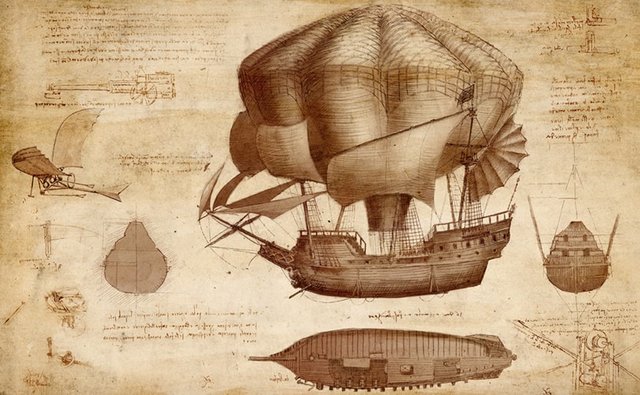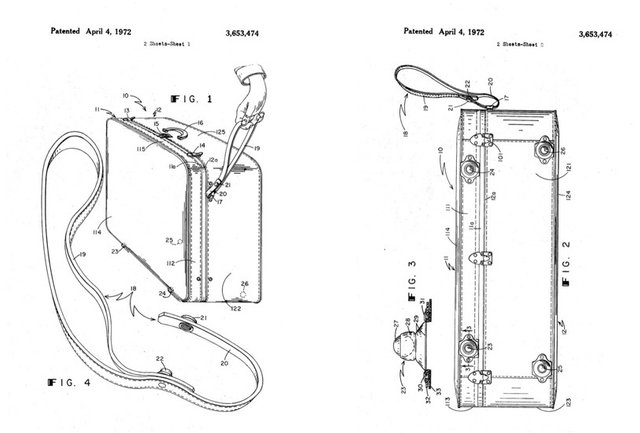Elon Musk - a Method for Unique Ideas!
"The First Principle"
Have you been in a difficult situation in which you are desperately seeking a solution, and in the end you do not find and give up? I suggest something very different. An alternative to thinking that is ingeniously simple, but it can give you a unique solution to your intricate case. See what this is all about:
What is it about:
The "First Principle" reflection is one of the most effective strategies for dealing with complex issues and finding original solutions.
The approach has been used by great personalities such as the inventor of the printing machine Johannes Gutenberg, the military strategist John Boyd, the philosopher Aristotle.
Even Elon Musk , the entrepreneur who inspired so many people, is also a fan of this productive thought model.
Here's how it works:
Rocket to Mars - from idea to realization
In 2002, Elon Musk began looking for ways to implement his idea of launching the first missile to Mars, which eventually led to the creation of SpaceX, the aerospace company.
The project was great, but Mssk did not miss the challenge.
He visited a number of aerospace manufacturers around the world and realized that the cost of buying a missile was just as cosmic:
Nearly 65 million US dollars!
The high price shocked him and he began to think about the problem ......
Later in an interview, Elon Musk said:
I love to approach things from the point of view of physics. Physics teaches you to think according to the "first principle" and not by analogy. So I asked myself, " What was a rocket made of ?" And I came up to the answer: From space alloy alloys, plus titanium, copper and carbon fiber. Then I asked about the price of the commodity stock. It turned out that the cost of materials for the rocket is only 2% of the total price.
Then Muss decided instead to buy a ready-made rocket for tens of millions, set up his company, buy the raw material and build the rocket alone.
This is how SpaceX is born.
Only a few years later, SpaceX has lowered the launch price by almost ten times, while at the same time making a profit.
And now follows the most important part:
What is "First Principle" thinking
and how it can be applied in practice
From the history of Muss, it is easy to see the essence of this type of thinking:
Decompose the process of its component parts so that it no longer has anything else to be broken down. And creating something new from this level.
Aristotle calls it "the foundation that gives the primary information about something ."
This is the thinking of a scientist who does not make assumptions, but begins to ask questions such as: "What are we sure of?" And "What is proven?"
In theory, this means digging down and down until you get to the basic truth about things and the situation as a whole.
The French philosopher and scientist René Descartes used this approach together with the method called today "Cartesian Doubt" - a constant suspicion of anything you might be doubting until something remains obvious, which is obviously an undeniable truth.
In practice, you do not necessarily expect to break down every problem to the atomic level in order to benefit from the application of the "First Principle".
The famous military pilot and strategist John Boyd created a thought experiment that demonstrated how the thinking principle "First Principle" works.
Let's see it!
Imagine that you have three things:
-Motor boat with water skiing at the back
-Tank
-Wheel
Now break these three things into their constituent parts:
-Motorboat - motorbike, hull and ski
-Tank - metal protectors, steel armored plates and cannon
-Wheel - Handles, Wheels, Pedals, Mechanisms and Seat
And now comes the question: What can you do from the different parts?
A great idea is a snowmobile - from the handles and the wheel seat, the metal protectors on the tank and the bike and the skis on the boat.
This is briefly thinking "First Principle":
The process of breaking the situation of key elements and reassembling them in a new, more efficient way.
DO construct and then construct PE !
How through the "First Principle" innovation is born
The snowmobile example gives another peculiarity of the approach - the combination of ideas from spheres that at first glance do not have one another. The tank and the wheel are quite different, but the combination of parts of them gives the new product, is not it?
It starts with the main and indisputable facts, a plan is made and an improvement of each element begins. And no wonder when it led to much better variants of original objects or to radically different and revolutionary.
Many things that changed the world were created in this way.
Johannes Gutenberg combined the screw-press technology from wine-making with a rolling set, paper and ink and received the press. The mobile set has been used for centuries, but Gutenberg is the first to understand the different elements of the process and adapt technology from a radically different area.
The result - higher printing efficiency and, above all, the dissemination of information in unprecedented dimensions.
So far, we have looked at what constitutes "First Principle" thinking, but putting it into practice is not so easy. Let's see why.
Thinking "First Principle" - Challenges and Lessons
One of the main obstacles is:
The propensity of people to optimize form rather than the function of something. The story of creating a removable suitcase is a great example of this.
During the Roman Empire, the soldiers used leather bags and suitcases to transport the food as they traveled. At the same time there were vehicles on wheels such as chariots, carts and carts. Yet for thousands of years no one has ever thought of combining the bag with the wheels!
The first suitcase on wheels was invented only in the 1970s by Bernard Sadow. One day while he was carrying his luggage through the airport, he saw a worker pushing a heavy machine onto a board on wheels. Until 1900, leather bags generally had a specific purpose - for pupils' backpacks, travel rucksacks, travel suitcases. The bags were only "zipped" in 1938. The first artificial backpacks were put on sale in 1967.
Despite all improvements, the shape of the bag remained largely the same. The rationalizations were repeated and touched on the same topic.
While everyone was staring at how to make a better bag or more accurately improve its shape, Sadow worked on how to make storing and moving things more efficiently.
What others create seems at first sight to be innovation, but is in fact a repetition of previous forms , not just an improvement in the basic function .
It's even more interesting ...
We come to the fine application of the "First Principle" - the Upper Flight:
How self-thinking is cultivated
The propensity of man to emulate is the stumbling block for the successful implementation of the "First Principle" thinking. When they picture the future, most people design this format in the future, not the function.
Some people when they criticize technological progress ask the ironic question "Where are the flying cars? They should have been here already. "
In fact, flying cars are already a fact and they are called airplanes. The people who ask the question are focused on the form (the planes do not look like cars) instead of paying attention to the function - we actually have airborne transport!
This means Ellen Muss, saying that people often "live life by analogy". And here is that thing with the fine letters you should never ignore: Be open-minded to what they leave you as an inheritance!
The often established practices that people are used to are uncritical. They are not called into question, which limits creativity .
Here is the key difference between continuous improvement and thinking "First Principle"!
Continuous improvement is accomplished within the limits set by the original vision of things.
However, thinking "First Principle" requires a person to give up "loyalty" to familiar forms and put the function at the forefront in the center.
Here are the key questions:
-What am I trying to achieve?
-What functional results do I want to see finally?
Here's the main line to follow:
Optimize feature and ignore form ! This is the way to learn to think not only creatively but also effectively in the "first principle" style.
The Power of "First Principle" - Where Can You Get It?
There is some irony in the fact that if one wants to "bury" a brilliant idea, to make an invention, he has to break things down to their main parts. Without the deepening of the foundation, the probability of scratching the details is small, which is actually important for the high levels of competition in any field.
Any innovation, even the most brilliant, requires a long period of repetition and improvement. SpaceX has had many simulations, thousands of adjustments, and many attempts have been made before it can be thought of building a missile at an affordable price, a rocket that can be reused.
But let us be clear : "The first principle" does not in any way reject the need for constant improvement, but CHANGES the direction of perfection.
If the "First Principle" is not understood and applied then it remains at the level of the wheel improvement and it is not possible to create a snowmobile.
If you want to learn how to think autonomously, thinking about "The First Principle" is the best way to do it.




You just planted 0.02 tree(s)!
Thanks to @m3morito
We have planted already 6069.28 trees
out of 1,000,000
Let's save and restore Abongphen Highland Forest
in Cameroonian village Kedjom-Keku!
Plant trees with @treeplanter and get paid for it!
My Steem Power = 20683.77
Thanks a lot!
@martin.mikes coordinator of @kedjom-keku